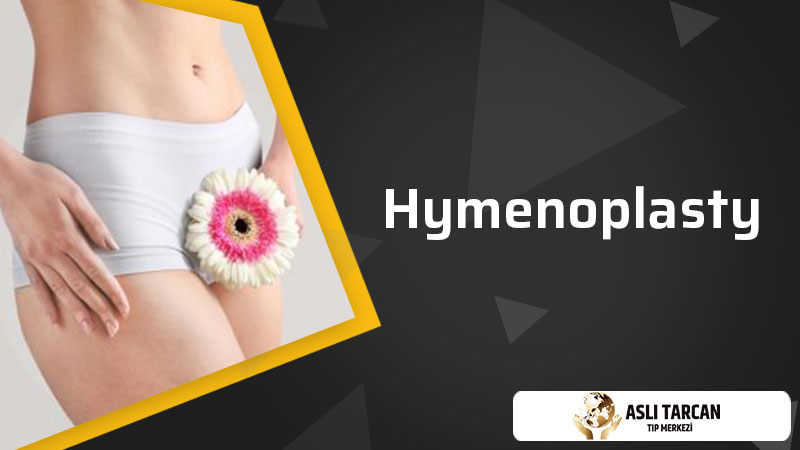Hymenoplasty Thousands of women apply to gynecologists for the hymen, which is considered an important taboo. According to the doctors; In addition to intercourse, the hymen can be lost in some unwanted accidents and situations that require an operation. This structure sometimes may not be congenital in some women. In addition to social pressure, some couples apply to experts for hymen repair to relive the excitement of the first night.
The hymen, which has varying degrees of sociological significance in all societies, is called hymen in the medical literature. “Hymen” is the name of the god of marriage in Greek mythology. The hymen is referred to as “hymen” in Latin. Hymenoplasty or “hymnography” operation is called the hymen repair process. Although the hymen does not have an anatomically and physiologically known task, it is thought to have a protective function against genital infections.
The hymen is the tissue integrity within 1-3 cm of the vagina. During sexual intercourse, tears occur in this integrity then bleeding occurs, but in some cases, bleeding may not occur, in such cases, the tissues open by stretching, no bleeding occurs. If there is no bleeding, sometimes problems may occur between the spouses; in this case, it is necessary to get help from a specialist gynecologist to get the most accurate answer. During the visual gynecological examination, people are informed about the type and condition of the hymen then psychological relief is provided.
The Process
Before the hymenoplasty, the doctor explains the hygiene rules to the patient. The patient should not be in the menstrual period in terms of the hygiene of the person. After the hymen examination, the patient’s general gynecological examination is performed and if the patient feels ready after the examination, the hymen can be sutured. Hymenoplasty is performed under local or general anesthesia. This depends on the patient’s condition. The process takes between 15 and 30 minutes on average.
Hymenoplasty can be temporarily or permanently. The temporary method is the procedures applied between 1 and 7 days from the date of the relationship. In the Fleep method, that is, permanent hymenoplasty, there is no time limit. It is done permanently and until the next date of intercourse, the patient complies with the necessary hygiene rules. She will not have any problems if the patient follows the rules about healing process.
Who can have hymenoplasty?
- Those who damage their hymen due to sex or other activities,
- Those over the age of 18,
- Women who are healthy and do not suffer from any serious illness can have hymenoplasty.
- A gynecological examination is also necessary to determine if your hymen can be repaired.
If the woman suffers from cancer of the genital or venereal diseases, then she is not suitable for treatment. Since the legal age limit is 18, hymenoplasty is not applied to people under the age of 18. Besides, an important infection in the vaginal area may cause the hymen to be postponed for a while. After the appropriate treatment is given and the infection heals, the hymen is planted. For people who use blood thinners, hymen repair is postponed to a later date when the drug is stopped and removed from the body.
The hymen can not only be torn during sexual intercourse, it can also be torn in different ways. For example, it can tear while doing sports or masturbating. Apart from that, patients who think they have made the wrong decision may decide to have the hymen erected. In some societies, hymen and bleeding after first night intercourse is something that is given extreme importance.
Testimony after Hymenoplasty
After treatment, the patient swill be observed in the recovery room for several hours and, if there are no complications, they will be relieved. The individual can continue work after 3 to 4 days. However, it is recommended that the patients start moderate activities after only 10 days.
- The patient will need to keep the area clean and use antibiotics to prevent any infection.
- The patient should use cold compresses and ice packs to relieve pain and swelling.
- The patient can take a bath 2 – 3 days after surgery.
- The patient should avoid having sex for 8 weeks after surgery.
- Complete recovery takes between 4 and 6 weeks.
No matter how much attention the patient pays after all surgical procedures, an infection may develop at a small rate. Especially if there is a hidden infection in the vaginal area before the procedure, this infection may increase with the procedure. In this case, the important thing will be to understand the infection and to start the necessary treatment without delay. Understanding the infection is possible by knowing the symptoms. Warning signs are a yellow, green, foul-smelling discharge. Rarely, it may present as a symptom of fever and severe pain. It will be possible to regress the infection with appropriate drugs.
One of the most asked questions about hymenoplasty is whether the process will be understood by the spouse or partner during sexual intercourse or in any situation. Hymenoplasty is not as easy to understand as it might seem. Hymenoplasty can only be understood if a gynecologist and obstetrician examine it. If permanent hymenoplasty is done with a good technique, it is not possible for the spouse or partner to understand. However, the suspicion is rarely possible if the spouse or partner has knowledge about hymen in temporary hymenoplasty. These threads will melt after a while because thin stitches that melt in the permanent hymen are used. Therefore, after a period of about a month, it is not possible to see any stitches from the outside. In addition, it will not be understood from the outside that the hymen is repaired. During sexual intercourse, it is never possible for the spouse to feel or understand that the hymen has been repaired.
Your doctor will ask you to come for control after hymenoplasty surgery. Many patients prefer the doctor in a different city for surgery and go to that city on the day of surgery. There are many reasons for this, the most important reason is to prefer a different city and not meet anyone familiar. Hymenoplasty is referred to as an aesthetic application. Ethically, your doctor cannot share this information with anyone, regardless of which city and whatever doctor you get.
How is Hymenoplasty Done & Finished by a Specialist?
There are several ways to answer “how is hymenoplasty done, finished?” by articles answering “what is hymenoplasty SEO?” After the hymenoplasty procedure, the specialist will typically provide post-operative care instructions to the patient. These instructions may include keeping the area clean, managing pain and swelling, and knowing when to return for a follow-up visit. The patient should follow these instructions to ensure a successful recovery and positive outcome. Additionally, patients should monitor their progress closely and contact their doctor if they experience any issues or concerns during their healing process. With proper care and attention, most patients can expect excellent results from a hymenoplasty procedure.

Women considering this procedure must seek advice from qualified specialists who have experience with this type of surgery, as it can be complicated when performed by inexperienced hands. Furthermore, before surgery, patients must receive adequate information about potential risks and complications associated with the procedure so they can make an informed decision on whether or not it is right for them. For a more precise and medical approach to “how is hymenoplasty done, finished?” please consult a doctor and get their perspective on the treatment.



